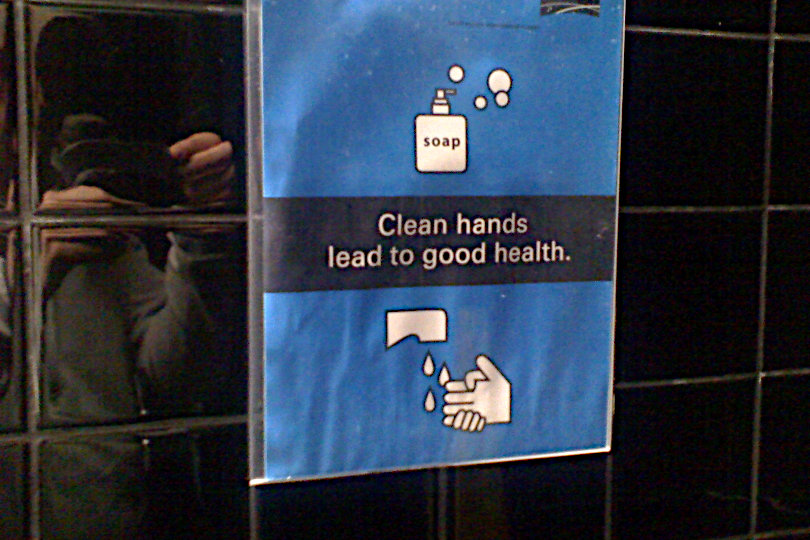
Undoubtedly, employees are the backbone of your company, so their health and well-being should be a top priority. The last thing you need is half your staff calling in sick because of some preventable illness making the rounds. As a responsible employer, it’s up to you to make sure your team understands and follows good hygiene practices.
The good news is educating your staff about hygiene doesn’t have to be complicated or expensive. With some simple actions, clear communication, and a little creativity, you can build good habits and a culture of wellness in your workplace. In this article, we’ll explore six effective ways to teach your employees about proper hygiene and set them up for success.

Lead by Example With Management
As a manager, you need to set the right example through your actions and behavior. Your employees will follow your lead, so make sure you:
- Practice good hygiene yourself. Wash your hands, cover coughs and sneezes, and stay home if you’re sick. Your team will do the same if they see you doing it.
- Provide resources. Make hygiene products like hand sanitizers, soap, paper towels, and tissues available around the workplace and in bathrooms. This makes it easy for your staff to do the right thing.
- Train new hires. Explain your company’s hygiene policies and expectations during the onboarding process. Set standards early so good habits can form from the start.
- Send out the occasional email or post signs in the staff area to reinforce key hygiene practices. Repeating the message helps keep it top of mind.
You can also hire professionals with an MSPH degree in industrial hygiene, which provides comprehensive knowledge about the various factors that can affect health in the workplace. This includes learning about potential health risks, how to evaluate them, and practical strategies to control or eliminate them. Hence, anyone with this degree is well-equipped to train employees about various aspects of health, safety, and hygiene at the workplace.
Start With Clear Policies on Hygiene Standards
To ensure proper hygiene in the workplace, start by establishing clear policies on hygiene standards. Explain what is expected of your employees in an easy-to-understand document.
Educate new hires during orientation and offer regular refreshers for all staff. You’ll want to cover:
- Hand washing: Wash hands thoroughly for a minimum of 20 seconds, especially after blowing your nose, coughing, sneezing, or using the washroom. Use soap and water or a sanitizer.
- Food handling: Follow safe food handling practices like washing hands, using gloves, keeping surfaces clean, cooking foods to proper temperatures, and avoiding cross-contamination.
- Equipment sanitation: Explain how to properly clean and sanitize shared equipment, tools, and surfaces to avoid spreading germs. Disinfect high-touch areas like doorknobs, keyboards, and phones regularly.
- Illness policy: Remind staff to stay home if they have symptoms like fever, vomiting, or diarrhea. Explain your policy for doctor’s notes and any paid sick leave benefits.
Make Hygiene Training Engaging and Interactive
To keep employees engaged with hygiene practices, make the training interactive and hands-on. Some suggestions:
- Role playing: Ask volunteers to role-play common scenarios like a customer complaint or health department inspection. Have the “employees” demonstrate how they would properly handle the situation. This helps reinforce good habits and procedures in a memorable and fun way.
- Consistency is key: Continually revisit topics in staff meetings, with quizzes and reminders about proper procedures. Consider “refresher” courses for long-term employees. Consistently reinforcing good practices will help make them second nature.
- Appreciate employees when needed: Whenever you witness employees following good hygiene practices like frequent hand washing, sanitizing their workstations, covering coughs, and staying home when sick, give them a shout-out in front of their coworkers. Send a company-wide email highlighting their good hygiene behavior. People appreciate being recognized and praised for their efforts, and it will motivate them and others to keep up the good work.

Place Visual Reminders Around the Workplace
Visual reminders are among the most effective ways to educate employees and encourage proper hygiene practices. Place posters, signs, and stickers around the workplace, especially in high-traffic areas like:
- Bathrooms: Place signs above sinks reminding employees to wash hands thoroughly for at least 20 seconds. You can also put stickers inside stalls asking employees to wash their hands before returning to work.
- Break rooms: Place posters demonstrating proper hand-washing techniques and coughing/sneezing etiquette. Also, underscore safe food handling procedures to prevent cross-contamination and foodborne illnesses. These types of communal areas need frequent reminders about hygiene.
- Time clocks: Have employees see reminders about hand hygiene and staying home when sick right when they start their shift. This helps set the expectation for proper practices during work hours.
- Lastly, place hand sanitizer dispensers next to the reminders so employees have the means to take immediate action.
Monitor and reinforce
Once you’ve educated your employees about proper hygiene practices, you need to make sure they stick to them. Monitor their compliance and reinforce to help make good habits stick:
- Check in on your team regularly to ensure they are following the procedures you’ve put in place. Do spot checks of work areas, restrooms, break rooms, and equipment to make sure they are clean. Provide feedback, both positive and constructive, to keep everyone on track.
- If you notice certain employees struggling to maintain good hygiene, speak with them privately. Re-educate them on proper practices and find out if there are any barriers preventing them from compliance.
- You should also schedule follow-up training on hygiene for your employees. Repetition is key to habit formation. Go over the basics again and provide opportunities for questions and clarification. Stay up to date with the latest health and safety guidelines as well.
With regular monitoring, reinforcement, and renewal of information, proper hygiene practices can become a norm in your organization. Maintaining high standards will benefit your employees, customers, and business as a whole.
Assess and improve
To properly assess hygiene practices, conduct evaluations, and get employee feedback:
- Evaluate current procedures: Walk through your current procedures step-by-step to determine what’s working and what isn’t. Talk to employees to get their input on what could be improved. Look for ways to simplify complicated steps or make tasks more efficient. Streamlining procedures makes them easier to follow.
- Get employee feedback: Ask employees for anonymous feedback on what’s easy or difficult about the current practices. Look for common issues that need to be addressed.
- Make improvements: Adjust procedures and provide retraining as needed based on your evaluations and staff feedback. Improve signage or equipment if that could help.
Make hygiene a team effort by evaluating together and listening to feedback from those directly affected by the procedures.

Conclusion
So there you have it – some easy ways to make sure your employees understand the importance of good hygiene at work. Although you’ll need to invest some time, effort, and money, just remember that keeping everyone healthy and happy will create a productive work environment where people feel respected and able to do their best.





![What Is a Markup Language? [+ 7 Examples] What Is a Markup Language? [+ 7 Examples]](https://static.semrush.com/blog/uploads/media/82/c8/82c85ebca40c95d539cf4b766c9b98f8/markup-language-sm.png)